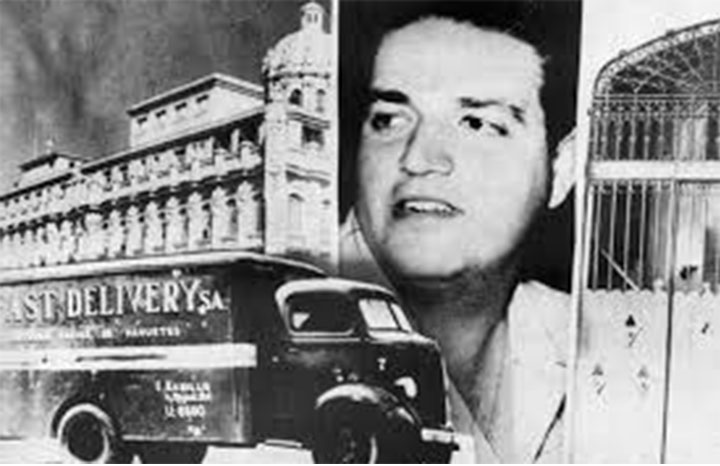
“If we fall, may our blood show the path to freedom!”, wrote shortly before falling in combat on March 13, 1957, the student leader José Antonio Echeverría, at the head of a command of the Revolutionary Directorate that that day assaulted the Presidential Palace and briefly occupied the Radio Reloj station.
The main objectives of both events were not achieved due to the lack of coordination in some actions at the scene of the events.
Their goals were to execute the dictator Fulgencio Batista, whose tyranny put the country in mourning, and, in addition, to take over the radio station, to inform the entire country, due to the level of audience of the news medium.
Batista was not in his office at the usual time and one of the vehicles planned to provide support with weapons lost the correct route on the way to the Palace.
The Command had conceived the audacity to execute the tyrant, due to his irrefutable record of murdering patriots, and once the news had been spread to the people, to go to the University Hill area, the scene of struggles for justice and reforms in education.
From their properties touched by the history and present of that time, they would deliver weapons to the people and call for a general insurrection, in support of the combats waged by the Rebel Army in the Sierra Maestra.
They were not coordinated actions by both combatant groups, but they responded to the identification of consciences between the July 26 Revolutionary Movement, headed by Fidel Castro, and the Student Directorate, whose leader was the architecture student José Antonio Echeverría.
The Political Charter of Mexico signed by both leaders also in 1956 attested to the full identity of principles and the recognition of the armed struggle as the main alternative in the methods to free the nation from opprobrium.
The vanguard command that had to access the president's office, where it was tradition to meet him at that hour, was disconcerted when he was absent.
In this context, Carlos Gutiérrez was mortally wounded in a fierce confrontation that the presidential garrison quickly engaged.
With the certainty that they would not fulfill the mission there, José Machado (Machadito) gave the order to retreat, delayed when he realized that Juan Pedro Carbó Serviá did not appear and returned to look for him inside the building.
Ignoring the failure of the planned assault on Batista's hideout, José Antonio, at the head of the group in charge of occupying Radio Reloj, headed to its headquarters and managed to penetrate a transmission booth and take over the microphone.
But he was only able to issue a short statement of his Communiqué to the People, of which a shocking recording still exists.
When he was cut off and forced to leave Radio Reloj, José Antonio Echeverría drove to the University in a car. In the process, he was intercepted by a patrol car, identified, and cowardly shot. In the confrontation, the leader once again showed his courage and determination to fight.
He was massacred on a street next to the teaching center, so the hero died very close to the places that witnessed his actions in favor of the student revolutionary movement and Cuba.
The heroism of March 13, 1957 continued to show the path of duty and that all those involved in the feat were responding to a commitment, and were also aware that the growing political and mobilizing environment in the country, mainly carried out by young people, had close synergy with their objectives.
Nicknamed Manzanita for his rosy complexion, with his death José Antonio gave a lesson of life and hope for the continuity of the Cubans' struggles.
He was born on July 16, 1932 in the western city of Cárdenas, belonging to the province of Matanzas, and he turned out to be one of the heroes with the kindest and purest imprint during his time in the educational centers where he was educated.
However, it was from the University of Havana that he showed his value at the national and even regional level, by participating in student events in Central America and as president of the legendary FEU from 1954 to 1957. (Text and photo: ACN)